Her Way: Cathy Marston builds her own brand of narrative ballet - Vancouver Ballet Society
- Home
- Features 2015 - 2019
- Her Way: Cathy Marston builds her own brand of narrative ballet

By Maggie Foyer
Cathy Marston, on first appearance, could well be one of those immaculate matching swans gracing London’s Royal Opera House stage, but see beyond her elegant appearance and you’ll discover a determined dancemaker who stands out from the crowd. She has become a choreographer who does not conform to the classical mould, but has instead shaped her own destiny along a path that’s uniquely hers.
Her parents, both English teachers, instilled in her a love of literature, which, combined with a sharp intellect and fluency in articulating ideas, fed her exceptional talent for telling stories in movement.
With a portfolio of more than 50 works performed in 11 countries, she is currently riding high as one of the most sought-after choreographers, known for her narrative contemporary works. The current emphasis in the ballet world on promoting women choreographers has done her no harm, but she attained her international status well before this need to address equality was even acknowledged.
Alongside her ballet training, Marston showed an early proclivity for both contemporary dance and choreography, with these two talents helping her gain entry to the profession. When she studied at the Royal Ballet School from 1992 to 1994, there was little contemporary dance on the curriculum. It was Marston who complained of the lack and drew up a petition, resulting in a meagre 10 classes delivered in her final year.
She had also showed initiative in auditioning abroad, but this did not result in a job offer. “No one told me you might not want to go [to an audition] in pink ballet tights with your hair scraped back,” she says wryly.
However, as luck would have it, Bernd Bienert, director of Zurich Ballet, came to the Royal Ballet School looking for dancers and watched one of those rare contemporary classes. She was, by her own admission, “quite good in contemporary” and was placed on Bienert’s shortlist. He returned to watch their ballet class but arrived late; still, Marston grasped her opportunity. “I don’t know what got into me that day, I look back and think it was another person inhabiting me, but I went up to him and said, ‘I’d really like to show you my choreography.’”
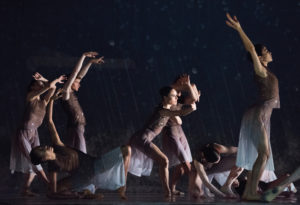
Photo: Erik Tomasson
He watched a video of the duet that had won her the Royal Ballet School’s Ursula Moreton Choreographic Competition in 1994 and offered her a contract with Zurich Ballet, a company with a varied repertoire of contemporary and classical works.
“It was just one of those moments,” she says. “At that point students were certainly not encouraged to go abroad.”
Things might have shaped up very differently if Marston had gained a contract at the Royal Ballet. “They did offer jobs to some young choreographers with talent, but the problem was, I was the girl.” And those were the days when “girl” and “choreographer” were not in the same bracket.
But Marston had not been forgotten in London. Darryl Jaffray, then director of education and access at the Royal Opera House, commissioned her to make small pieces while on her summer holidays from Zurich Ballet. “Anthony Dowell ended up seeing one and asked me to make a piece for Dance Bites. I ended up doing three pieces, which was brilliant.”
Dance Bites was a brave, if not entirely successful, experiment by the Royal Ballet to tour small groups of top dancers in new works to the provinces. Dance Bites didn’t change the modern ballet landscape, but it kept Cathy Marston’s name on a list of choreographers to watch.
Along with the opening of the revamped Opera House in 2000 came the Linbury Studio Theatre, a smaller space for a diverse range of dance, and more commissions for Marston. Among these works was before the tempest … after the storm (2004), a startlingly new treatment of Shakespeare’s The Tempest. In it, two duets — one a prequel of Sycorax giving birth to Caliban, the other a sequel of Prospero releasing Ariel — are told in inventive movement, resulting in a post-modern work presented in the realm of high classicism.
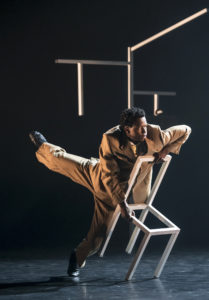
In Britain, her innovative works on the small stage — often enjoying the luxury of commissioned music, top designers and excellent casts — continued to be shown at the Linbury. Then, in 2007, she was appointed director of Bern Ballett, in Switzerland, a post she held until 2013.
“In Bern, I started with a very small audience, one that really wasn’t interested in narrative work — but that changed. The open rehearsals I offered were one of the key ways I made that transformation, because people could see the process and understand how the narrative was working when I focused the rehearsal in different ways. With people sitting in front of you, you can see how they’re responding.”
Audiences grew and one of her proudest achievements was saving Bern Ballett when closure was threatened.
Never conforming to a stereotype, Marston has been happy to sit somewhere between the ballet and contemporary worlds. “For a long time, people haven’t known quite where to put me. Was I a reliable person to ask for a big piece for a ballet company? Was I not too classical for a contemporary company?”
It may be this non-conformist streak that delayed her rise to prominence: too modern for the classicists and too classical for the modernists.
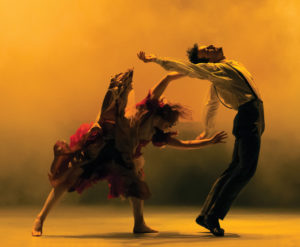
Photos: Emma Kauldhar
There is also the “narrative” label.
Marston admits, “I resisted this for a long time because I didn’t want to be put in a box. When I was younger, my pitch was that I could do abstract and narrative. But, as a director, you want to know what you’re getting. I think the success I’m having now is because I’m in my own shoes, I know who I am as a choreographer. I am sure the female thing has got something to do with it, but I’m a certain age, with a certain amount of experience behind me — and narrative has come back into fashion.”
Now, at 43, with her career building momentum, she is starting to experience the backing of major companies. “As soon as one or two big companies commission you, everyone comes calling.”
When it’s time to get to the work of creation, Marston seldom arrives at the studio with movement phrases prepared. “I go into the studio with the scenario and I write lists of words that describe the character or the emotion I am trying to express. The dancers and I talk through this list of words and then work on movement, so each character has a vocabulary,” she says. “But I have always got the music [ready]; every bar and every note is counted through.”
She shows me a music score covered in notes. “It’s all very clearly laid out because I’ve usually worked with the composer. There are often limited funds for commissions and I might suggest working on a musical arrangement with a composer like Philip Feeney, which we will anchor with music of the period. For Jane Eyre, we used Fanny Mendelssohn’s music. I try to cut down on props and make the set and costumes suggestive rather than illustrative.”
Marston finds that in terms of character, pointe work brings an extra level of expression, as she explains with regard to her Northern Ballet production of Jane Eyre.
“Jane Eyre is on pointe, but it’s obvious to me that Bertha [Rochester’s mad wife who is confined in the attic] is in bare feet. She’s grounded and wild, whereas Jane has been squashed into this formal shape. And, quite honestly, on big stages pointe shoes give extra shape and a sort of vigour.”
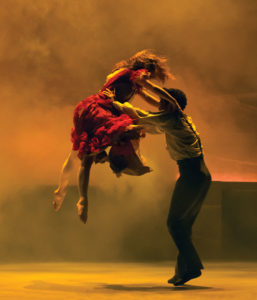
Photos: Emma Kauldhar
This fusion of techniques is evident, too, in her pas de deux. “I use a mix of ballet in strength-based lifting and contact in counterbalance and momentum. This mix enables me to express characters and situations that wouldn’t have been possible in a traditional ballet vocabulary.”
When it comes to the story selection, Marston looks for something with a central thread to grip the audience’s attention. In Snowblind (2018) — a 30-minute work created for San Francisco Ballet based on Ethan Frome, Edith Wharton’s novel about a tragic love triangle — that thread was found in an element from nature. “The idea of the snow having its own personality and how that impacted on the relationships and the characters felt like a gift for dance. I’m looking for stories that have that little extra ingredient.”
In Lady Chatterley’s Lover, a recent commission from Les Grands Ballets Canadiens de Montréal, the extra element was coal: the compressed carbon hacked out of the earth, heaved around, burnt, becoming smoke and finally embers. The work was done by women during the First World War, the time of the D.H. Lawrence novel on which the ballet is based, and Marston found connections to Lady Chatterley coping with the physical weight of her husband, disabled in the war, and the emotional weight of a marriage breaking down. “I don’t expect the audience to articulate this, but I hope they feel the clarity in the movement and the intention from the dancer,” says Marston.
In Jane Eyre, Northern Ballet’s artistic director David Nixon was not happy with a cast list that at first had only a few male roles. “I needed to find a way to use the corps de ballet, so I created an imaginary ensemble of men to express the gist of the story in an expressionistic way,” she says. “I also play with who is telling the story: first person narrator or a chorus? I find, more and more, in each new ballet, that it’s a chorus. So, two things: I’m looking at how the story can be told. Is it linear, is it in flashbacks, is it a sort of layers of time and memory? Dance can do all of this, if you’re really on it with the structuring. And then I’m looking for what qualities the group might bring.”
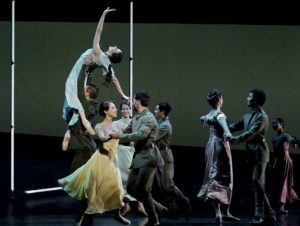
Photo: Sasha Onyschenko
Victoria, Marston’s fourth commission from Northern Ballet (in partnership with the coproducer, the National Ballet of Canada), is set to premiere at the company’s home base in Leeds in March. “It’s 100 years of world history so you’ve got to find your angle. I’m working with dramaturg Uzma Hameed; we’ve both done a lot of reading and research and spent a wonderful week together when my house was covered in post-its!”
Marston was drawn to the character of Beatrice, Queen Victoria’s youngest child, charged on her mother’s death with editing, one might say censoring, her hundreds of diaries. “So, the version we have of Victoria is actually from Beatrice, which makes this particular mother/daughter relationship very interesting,” she says.
“I’ve looked at a fair number of stories that I know will present difficulties. Take Hedda Gabler, what a great character, so much passion, the repression, but then there is the stuff about money, and you just can’t do it! The amount of bad mime and theatrical devices to get vaguely near that corner of the story just takes the point of it away for me.”
What about Lady Chatterley’s Lover, which Les Grands Ballets Canadiens premiered in September 2018 to ecstatic reviews? She describes the D.H. Lawrence novel as “a great story, about the body, about sensuality, but equally about the intellect and the mind. It seemed danceable in a narrative way and there was also an abstract level to it. The tension between class and between nature and industry added choreographic possibilities.”
The 1928 book, controversial at the time for its frank depictions of sex and breaking of class conventions, brings different problems in the modern age. Marston mentioned a conversation with a fellow choreographer regarding the way the character of Lady Chatterley should be performed. “She was saying, ‘Are you asking her to be sexy?’ Well, how do you ask someone to be sexy? What is sexy? It’s really difficult.”
Marston expresses a concern that she might garner a Victorian label. But hearing about the many and varied projects (still under embargo at the time of filing this story) that she has coming up, I doubt this will be a problem. This is one choreographer successfully creating her own brand.
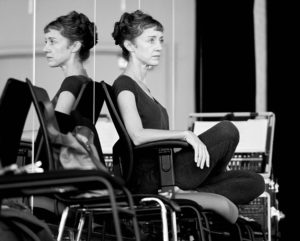
Photo: Sasha Onyshchenko, courtesy of Les Grands Ballets Canadiens de Montréal
